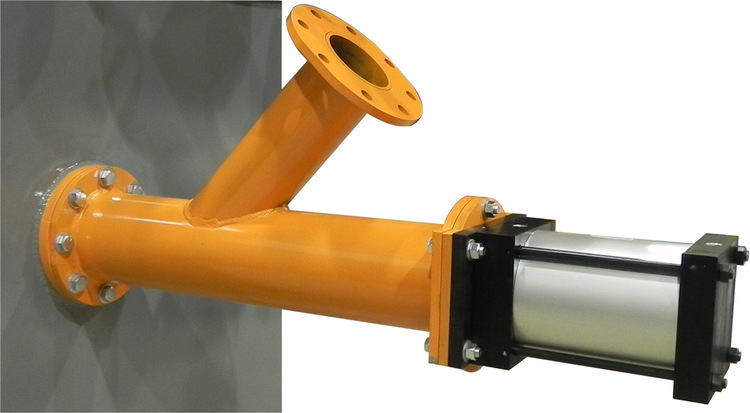SMART™ Series Retractable Nozzle 360°
The Martin® SMART™ Series Retractable Nozzle 360° extends service life in preheater towers and high temperature/high dust applications by pulling the discharge inside the vessel.
Features and Benefits:
- 360-degree effective cleaning area
- Nozzle extends to fire then retracts to protect exposed tip from extreme heat
- Works with standard air cannons (150L Martin® Hurricane is recommended)
- 360 degree nozzle weldment is serviceable for the outside of the riser duct
- Controlled by one solenoid (110 volt/220 volt/24 volt)
- 360-degree nozzle is less aggressive, eliminating damage to refractory from improper use of compressed CO2
Our technicians and engineers are available to provide expert advice and assistance on this product and all of your bulk material handling questions and problems. Please contact us today and let us help!
We Solved Their Problems!
Let us help you solve yours as well. All products and services provided by Martin Engineering carry our Absolutely No Excuses Guarantee. If we don't solve your problem, we will fully refund your money or provide a different solution for you. Period.
Air Cannons Drastically Reduce Unscheduled Outages At Cement Plant
A plant produces over a million tons of cement every year. Due to the large production volumes, material was building up on the raw feed material inlet chute to the feedshelf in the preheat tower. The plant was incurring unscheduled outages due to buildup and blockages, costing tens of thousands of dollars per year.
Air Cannon Installation Results In 80% Fewer Stops For Cleanup
On the ship unloading conveyors at Arcelor Mittal in France, matter was accumulating along the belt and at the transfer points, which was reducing material flow. The client had to increase the number of stops to manually clean-up the material, generating fairly substantial additional costs.
Air Cannons Eliminate Production Bottlenecks at Steel Production Plant
Rainy weather was causing buildup problems at a steel production plant. The material was accumulating on the walls of the hoppers causing a consistent production bottleneck. To knock down the buildup, the plant resorted to hitting the walls with tools. The frequency of the production stoppages were proving to be too costly - with high labor expenses, shortened refractory life and reduced hopper efficiency.
